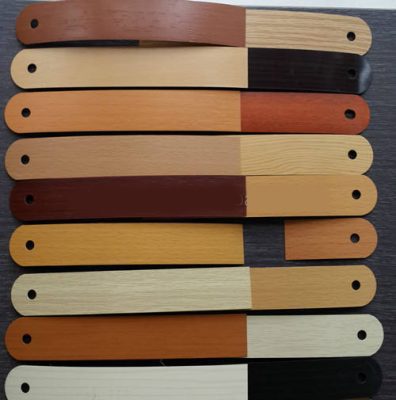The standard size of edge banding can vary depending on the type of edge banding material and the manufacturer. However, the most common standard sizes for edge banding are typically as follows:

- Width: Edge banding is available in various widths, but the most common widths are between 15mm to 45mm (approximately 5/8 inch to 1 3/4 inches). These sizes are suitable for covering the exposed edges of plywood, particleboard, MDF, and other panel materials.
- Thickness: Edge banding comes in different thicknesses, but the standard thickness ranges from 0.5mm to 3mm (approximately 1/64 inch to 1/8 inch). The choice of thickness depends on the project’s requirements and the material being covered.
- Roll Length: Edge banding is often sold in rolls, and the length of these rolls can vary. Common roll lengths are 50 feet (15 meters) or 250 feet (76 meters), but longer rolls may be available for larger projects.
It’s important to note that while these are standard sizes, edge banding is available in a wide range of sizes and can be custom ordered to meet specific project requirements. The choice of size depends on the project’s design, the material being covered, and the desired aesthetic outcome. Additionally, some manufacturers may offer edge banding in metric sizes, so it’s important to specify the size in the measurement system that’s relevant to your region.
When selecting edge banding for your project, consider the dimensions of the material you are covering and how the edge banding will impact the final appearance and durability of the project. It’s often a good practice to match the edge banding width and thickness to the thickness of the panel material for a seamless and professional finish.
